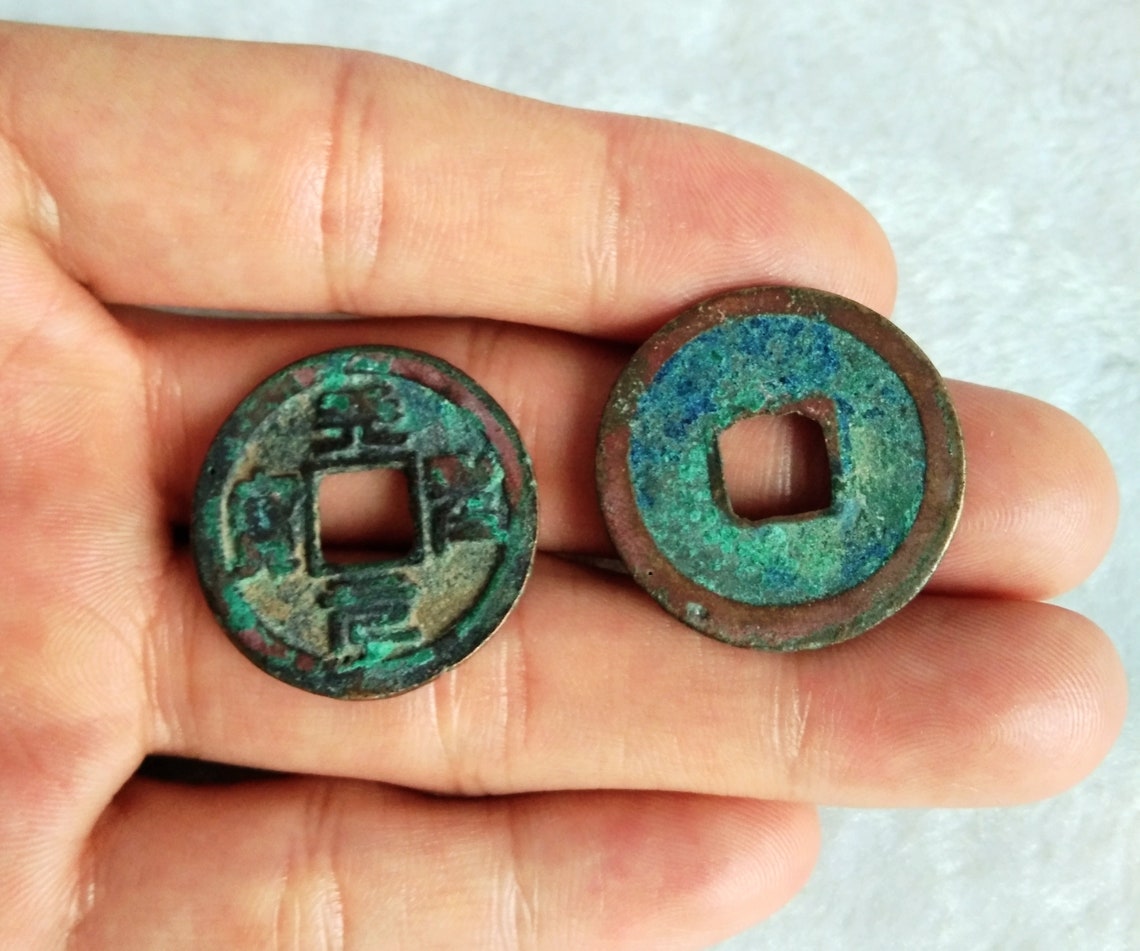
If the coin has the Chinese character 開, such as the example at the left, then it is a kai yuan tong bao Please see Qing Dynasty Coins for examples of these coins along with Some coins produced at the end of this dynasty were copper instead of bronze and were stamped by machines instead of cast in molds. However, when used in the inscription of Qing dynasty coins the character is a transliteration of the Chinese character bao (宝) meaning "treasure". This character ("boo") is written not in Chinese but in the Manchu script. If the coin has a character that looks like a coiled line or curlique similar to the character at the left then the coin is from the Qing (Ch'ing) Dynasty (1644-1911).

It is very likely that your coin is one of these common types: If you are not an "expert" but happen to have an old Chinese cash coin and would like to know a little more about it, the following simple guidelines may be helpful. Identifying a Chinese coin can be a real challenge, however, if you cannot read Chinese and are not an experienced collector. Of course, those who can read Chinese and are familiar with Chinese coins, or have reference books available, can easily identify a particular coin. There are hundreds of different types with thousands of varieties. In these cases, the two characters indicating "currency" would be the bottom and left characters.Ĭhinese cash coins (round copper or bronze coins with a square hole in the middle) were made for more than 2,000 years. The literal translation would thus be "universal currency" ( tong bao 通寶).Īs mentioned above, the inscriptions on a few coins are read clockwise beginning with the top character. On the above coin, the two characters meaning "currency" are the right (通) and left (寶) characters. (For an interesting story on the origin of these terms for "currency", please see the bottom of this page.) 重寶 "heavy currency" (pronounced zhong bao).元寶 "original currency" (pronounced yuan bao).通寶 "universal currency" or "circulating currency" (pronounced tong bao).However, if you wish to be very literal in your translation, these two "currency" characters can be translated as follows: The other two characters (usually the right and left) on the coin have the general meaning of "currency" and do not really need to be translated. In a few cases, the inscription is read clockwise beginning at the top which means the "period title" characters would be the top and right characters. In this example, the "period title" is "康熙" (top character and bottom character) which means the coin was minted during the reign of the Kangxi Emperor In the vast majority of cases, the character at the top and bottom refer to the "period title" ( nianhao 年号) of the emperor under which the coin was cast. History which is discussed at Ancient Chinese Coins with Charm Features.) (This particular coin, incidentally, has a very interesting If you were to write these characters on one line you would write them from left to right as: 康熙通寶 The inscription (legend) on this coin would therefore be read as 康 (character at top), 熙 (character at bottom), 通 (character at right) and 寶 (character at left). The characters on a typical Chinese coin are read in the following order: top, bottom, right, left. It has four Chinese characters (symbols). The old coin at the left is an example of a typical Chinese cash coin which was cast during the Qing (Ch'ing) Dynasty (1644 - 1911 AD). Most Chinese coins are round with a square hole and have four Chinese characters on the obverse side.
#Chinese coins with holes how to
How to Read the Characters (Symbols) on a Chinese Coin If you already know how to read Chinese coins and charms and are only looking for a translation, please refer directly to this list of inscriptions.

Once the correct sequence of characters has been determined, a comprehensive listing of charm inscriptions with English translation is provided to give you the meaning of the inscription or legend. The following is a guide or primer for non-Chinese readers which should help you to determine how the Chinese characters on the coin or charm should be read in the proper order. One of the biggest problems a coin or charm collector faces is trying to decipher Chinese characters so as to identify a coin or to understand the purpose and meaning of a charm. Guide to Reading Chinese Characters on Coins and Charms


 0 kommentar(er)
0 kommentar(er)
